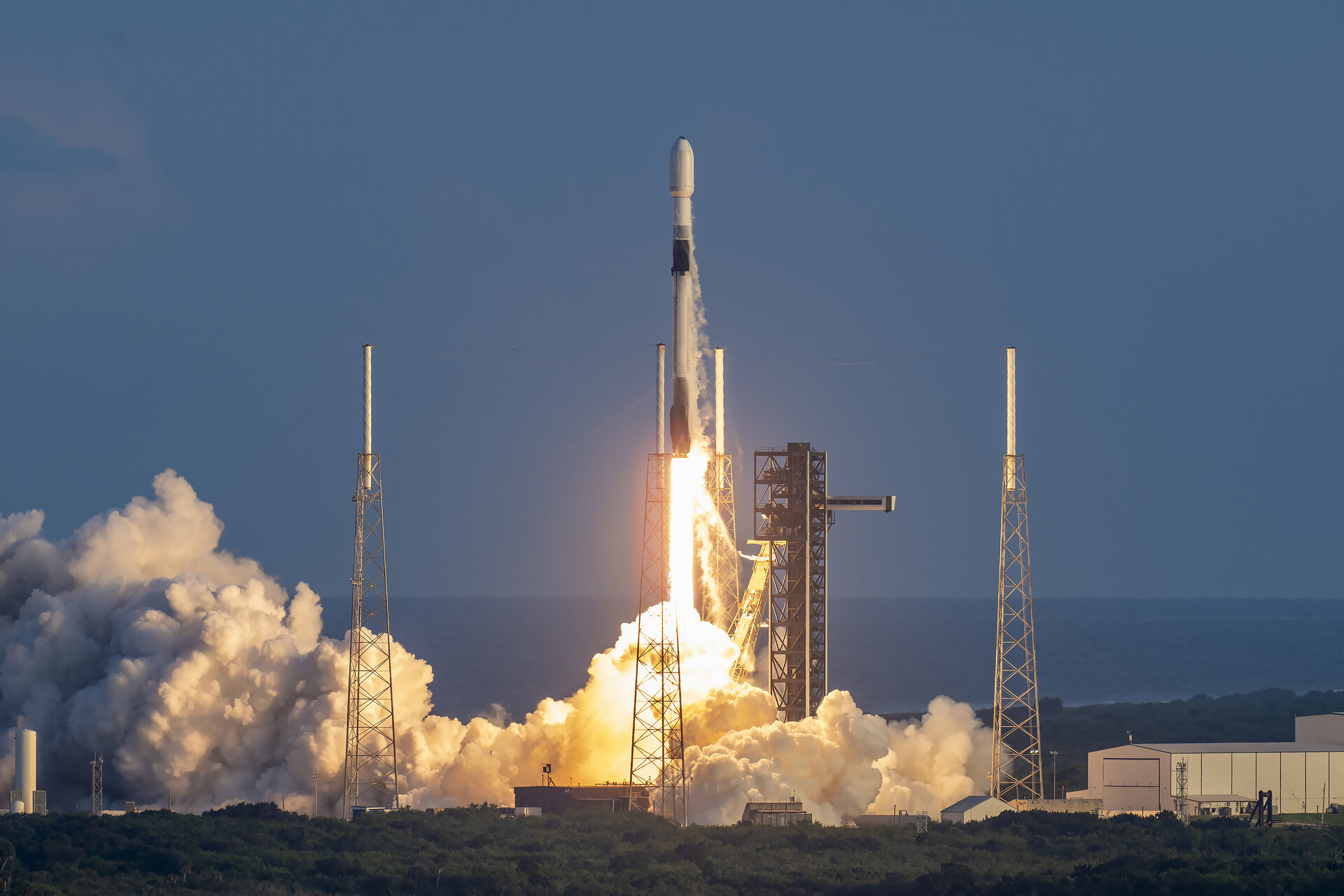17/09/2024
524 views
5 likes
The European Galileo satellite navigation system keeps growing: a new pair of satellites has joined the constellation after a journey on a Falcon 9 rocket, launched from the Kennedy Space Center in Florida on 18 September at 00:50 CEST (17 September 18:50 local time).
The 13th launch in the Galileo programme, performed by SpaceX under contract with ESA, has taken Galileo satellites number 31 and 32 (FM26 and FM32) to medium Earth orbit, extending the constellation to make it more robust and resilient. In the coming weeks, the new satellites will reach their final destination at 23 222 km, where they will be tested prior to starting operations.
ESA Director of Navigation Javier Benedicto said, “With the deployment of these two satellites, Galileo completes its constellation as designed, reaching the required operational satellites plus one spare per orbital plane. The remaining 6 Galileo First Generation satellites are expected to be deployed in 2025 and 2026 for increased robustness and performance, solidifying the resilience and reliability of Galileo and enabling uninterrupted delivery of the world’s most precise navigation.”
ESA, as design authority and system development prime, together with manufacturer OHB, has developed and tested 38 satellites since the conception of Galileo. All but six satellites have been launched, with the remaining ones ready to join the constellation starting next year. They will be launched in pairs by Ariane 6, ESA’s new launcher that successfully completed its inaugural flight in July. Thereafter, the first batch of Galileo Second Generation (G2) satellites, currently under development by Thales Alenia Space and Airbus Defence and Space, will also be placed in orbit by ESA’s heavy launcher.
Galileo, onwards and upwards
2024 has been a busy year in the Galileo programme, that moves ahead at full speed. In April, the first dual launch of the year placed satellites 29 and 30 in orbit. After a successful early orbit phase and test campaign, the pair entered into service in September.
Just a few days prior to the April launch, Galileo’s new Public Regulated Service (PRS) signals started broadcasting. This encrypted navigation service is specifically designed for authorised governmental users and sensitive applications, contributing to increase Europe’s autonomy and resilience in the critical domain of satellite navigation.
Also in April, Galileo’s ground segment, the largest in Europe and one of the continent’s most critical infrastructures, was migrated with no user impact. This upgrade was needed in part to prepare the system for Galileo’s Second Generation, that is being built by European industry. G2 satellites will be ground-breaking with fully digital navigation payloads, electric propulsion, a more powerful navigation antenna, inter-satellite link capacity and an advanced atomic clock configuration.
About Galileo
Galileo is currently the world’s most precise satellite navigation system, serving over four billion smartphone users around the globe since entering Open Service in 2017. All smartphones sold in the European Single Market are now guaranteed Galileo-enabled. In addition, Galileo is making a difference across the fields of rail, maritime, agriculture, financial timing services and rescue operations.
A flagship programme of the EU, Galileo is managed and funded by the European Commission. Since its inception, ESA, as system development prime and design authority, leads the design, development and qualification of the space and ground systems, and procures launch services. ESA is also entrusted with research and development activities for the future of Galileo within the EU programme Horizon Europe. The EU Agency for the Space Programme (EUSPA) acts as the system prime for the operational system provider, ensuring exploitation and safe and secure delivery of services while overseeing market demands and application needs.
For more info about Galileo: https://www.usegalileo.eu/EN/



